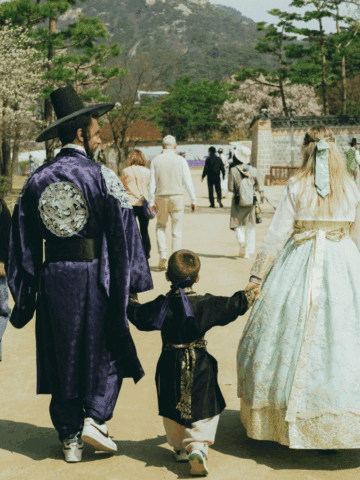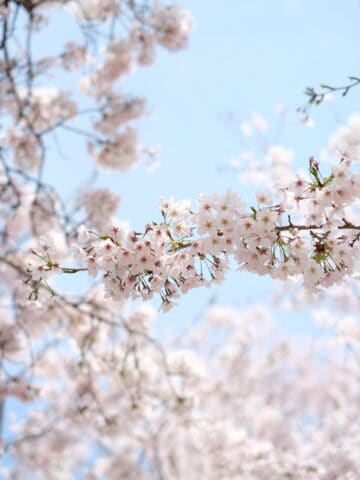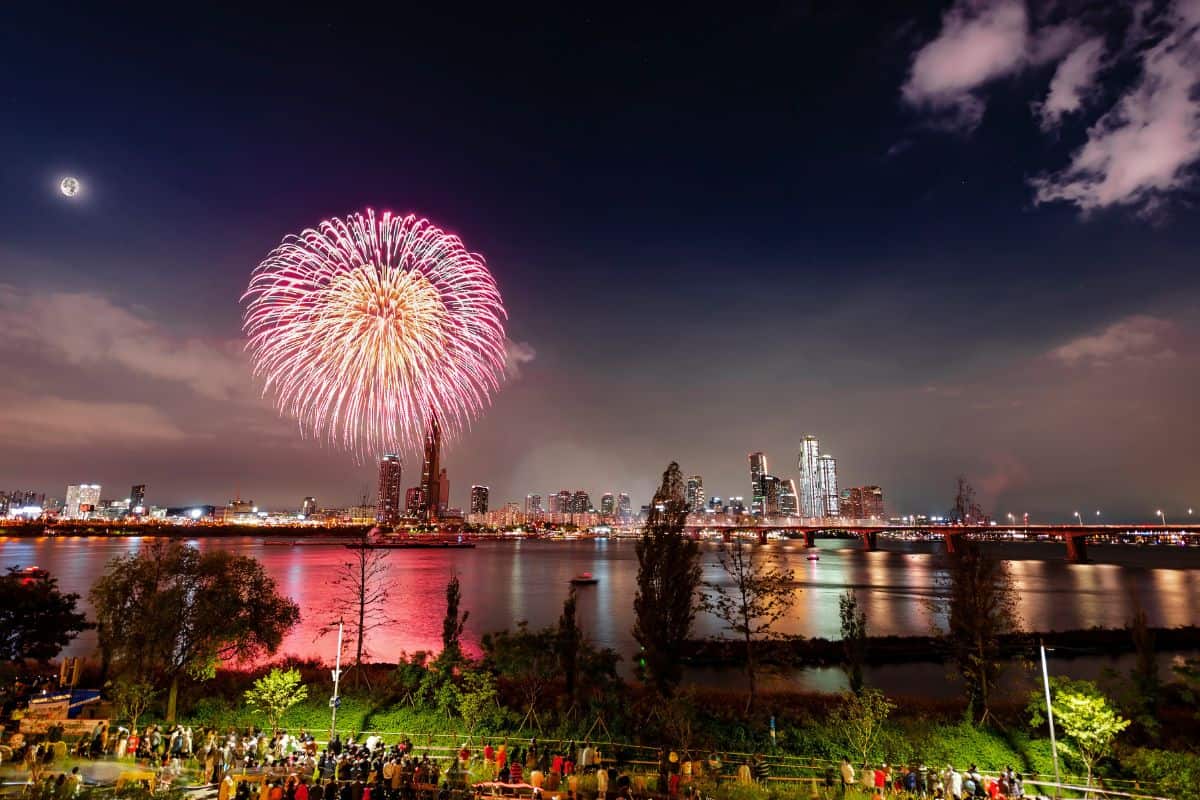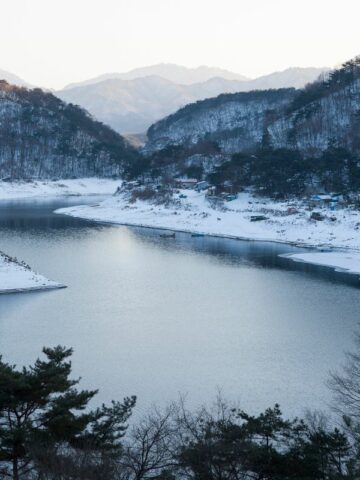Every autumn, the city of Andong in South Korea comes alive with the rhythmic beats and vibrant colors of the Andong Mask Dance Festival. This 10-day celebration combines traditional Korean mask dances, lively performances, and local cuisine and also preserves South Korea's rich cultural heritage.
Visitors can immerse themselves in a world of history and tradition, where ancient masks and dances tell stories passed down through generations.
The festival, recognized by UNESCO for its cultural significance, offers a unique glimpse into Korean culture that's hard to find anywhere else. Discover the magic of performances, explore local crafts, and taste the delicious food that showcases the best of Andong.
Jump to:
📜 Historical Background
Origins of the Andong Mask Dance Festival
The festival, which began in the 16th century during the Joseon Dynasty as a ritual to honor ancestors and ward off evil spirits, reflects the community's deep respect for their heritage and spiritual beliefs. The people in Andong, renowned for its rich cultural traditions and historical sites, have preserved this event for centuries.
Festivities include mask dances, especially the Hahoe Pyolshingut, which pokes fun at various societal figures like aristocrats and scholars. This unique blend of humor and tradition has made the festival vital to Korea's cultural landscape.
The Significance of Masks in Korean Tradition
Masks, or "tal," are a crucial part of Korean heritage, representing both protection and anonymity. Each mask has a specific role and story in the Andong Mask Dance Festival and is often made of wood and designed with bright colors and exaggerated features to convey emotions or characters.
The Hahoe masks used in the festival are particularly famous and they symbolize different characters in traditional Korean dramas. Designated as an Intangible Cultural Heritage, these masks play a significant role in rituals that preserve traditional Korean values and folklore.
The craftsmanship of these masks reflects Korea's artistic heritage, connecting the past to the present through vivid performances.
🏘️ The Hahoe Folk Village
Exploring the Birthplace of the Festival
The Hahoe Folk Village is where the famous Andong Mask Dance Festival originated, blending traditional dance performances with the unique backdrop of historical settings. Visitors can witness the intricate mask dances deeply rooted in Korea's history.
Hahoe Village's Unique Architecture
Hahoe Folk Village is recognized for its traditional architecture, especially the hanok houses, which are notable for their tiled roofs, wooden beams, and curved eaves, reflecting the aesthetics of the Joseon Dynasty.
The village's layout is designed to harmonize with its natural surroundings while providing practical living spaces for its residents, and its architecture as an example of how traditional Korean beliefs about harmony with nature were translated into living spaces.
Cultural Significance of Hahoe
The Hahoe Folk Village holds great cultural significance and has been designated a UNESCO World Heritage Site, highlighting the village's exceptional preservation of cultural traditions, and making it a living museum of Korean culture.
The village is not just a tourist attraction but a place where residents live in harmony with centuries-old traditions. Hahoe's cultural practices, like the mask dances and traditional crafts, offer a glimpse into Korea's rich heritage, maintaining a living connection to the past for future generations.
🎊 Festival Highlights and Activities
The Grand Opening Ceremony
The festival begins with a spectacular opening ceremony, and kicks off with a parade of performers wearing colorful traditional masks, showcasing the diverse cultures from different parts of Korea and other countries.
Next, important figures, such as local officials and festival organizers, give speeches that set the tone for the festival and express its cultural significance. Attendees are treated to a vibrant display of music, dance, and theatrics, making it a truly memorable start to the event.
Diverse Mask Dance Performances
The heart of the festival is the mask dance performances ranging from regional Korean styles, like Bongsan Talchum and Gasan Ogwangdae, to international acts from countries like Thailand and Mongolia.
Each performance tells a unique story, often with humorous or satirical elements. Special performances, such as the Hahoe Pyolshingut, humorously critique the upper class, entertaining audiences while preserving cultural traditions.
Ceremonial and Shamanistic Events
The festival is rich with ancient rituals and ceremonies. Attendees can witness the Lotus Lantern and Bonpae ceremonies, along with shamanist rituals that add spiritual depth to the festivities.
There's also the Naebanggasa chanting contest, which features traditional Korean songs. These events provide a glimpse into Korea’s spiritual heritage and allow participants to experience age-old customs firsthand.
Fireworks and Evening Festivities
As the sun sets, the festival atmosphere heats up and the evenings are filled with sparkling fireworks and lively nighttime shows. Attendees can enjoy musical performances, street food, and various activities that light up the night.
The fireworks display is a major highlight, illuminating the sky in vibrant colors and providing a perfect end to the day's activities. It’s a festive celebration that captivates everyone.
Traditional Mask-Making Workshops
Traditional mask-making workshops let visitors dive into an art form that's rich in history, where they learn from skilled artisans about the techniques used to create the intricate designs on Korean masks.
Attendees can even try their hand at making their own masks, guided step-by-step through carving and painting, giving everyone a chance to take home a personal piece of the festival.
Local Cuisine and Food Stalls
The festival's food stalls are just as varied and exciting as the performances. Visitors can sample various Korean dishes, from bibimbap to tteokbokki.
These stalls serve street food that offers a true taste of Korean flavors. Trying local cuisine is necessary for anyone wanting a full cultural experience. The food stalls are bustling and colorful, making them a joy to explore.
🧑 Visitor Information
Travel and Accommodation Tips
Visitors can reach Andong from major cities like Seoul or Busan through several trains and buses, like Bus 46, providing a convenient route from Seoul.
Accommodation options include traditional Korean guesthouses called hanoks, hotels, and motels. For a unique experience, consider staying in a hanok in the UNESCO-designated Hahoe Village, which adds to the cultural immersion.
Booking in advance is vital as the festival is a popular event. The weather in early October can be mild, but it's best to bring layered clothing.
Guide to the Festival Venues
The Andong Mask Dance Festival occurs at multiple venues across Andong, with the main events held at the Mask Dance Park.
Buyongdae Cliff offers a great view of the performances and the picturesque landscape. The festival also includes various activities in Andong Hahoe Village, where visitors can join hands-on programs.
City buses are available to take visitors to different venues, but checking the festival's official visitor information on schedules and locations is recommended.
📍 Surrounding Attractions and Activities
The Andong Soju and Traditional Food Museum
The Andong Soju and Traditional Food Museum is a must-visit for anyone interested in traditional Korean spirits as it showcases the history and process of making Andong Soju, a locally distilled spirit with a rich heritage.
Visitors can learn about the unique fermentation process, taste some samples, and check the exhibits that display traditional tools, along with detailed videos explaining every step of the distillation. There’s also a gift shop where visitors can purchase authentic Andong Soju to take home.
Buyongdae Cliff and Woryeonggyo Bridge
Buyongdae Cliff, nestled along the Nakdong Rivers, offers an unforgettable panoramic view of the entire Andong Hahoe Village.
Not far from the cliff is the enchanting Woryeonggyo Bridge, perfect for a leisurely stroll at night when it's lit up and offers fantastic photo opportunities.
❓ Frequently Asked Questions
Tickets for the Andong Mask Dance Festival can be purchased online or on-site. Buying them in advance is recommended to secure your spot and avoid long lines. The official website offers ticket options and prices.
The Andong Mask Dance Festival has roots in ancient shamanistic beliefs and practices. It originated during the Joseon Dynasty (1392-1910) and features masks that represent various characters from Korean folklore. This festival has evolved over centuries, reflecting traditional Korean culture and heritage.
The Andong Mask Dance Festival is celebrated in Andong, South Korea. Tourists can access Andong by taking a train from Seoul or other major cities. For example, there are tours that include transportation from Seoul, making it convenient for visitors to reach the festival site.





Leave a Reply